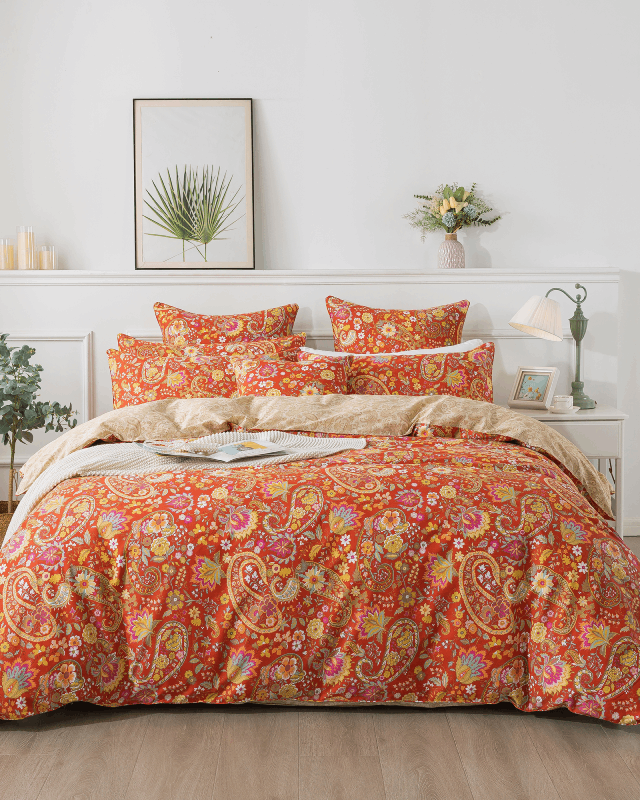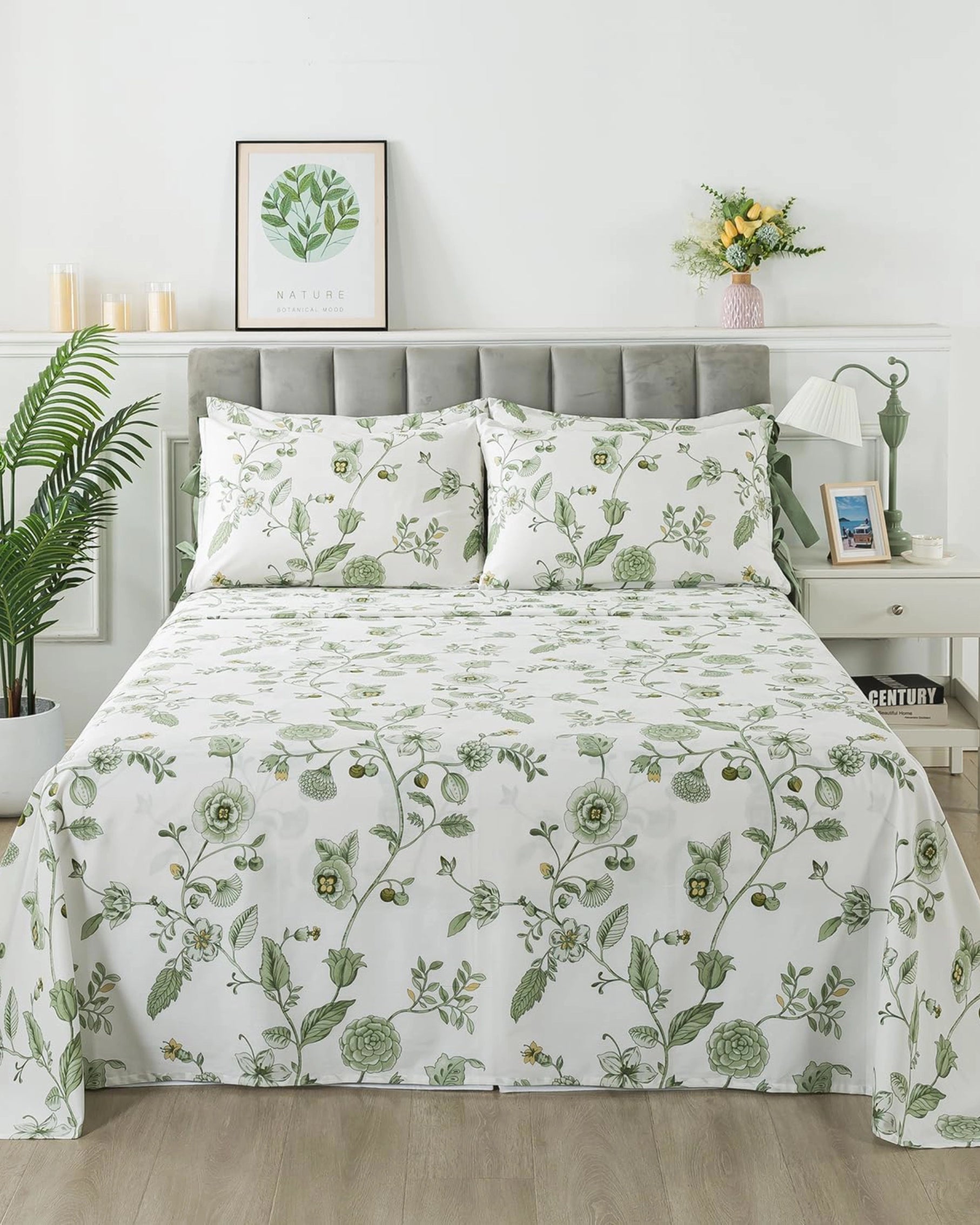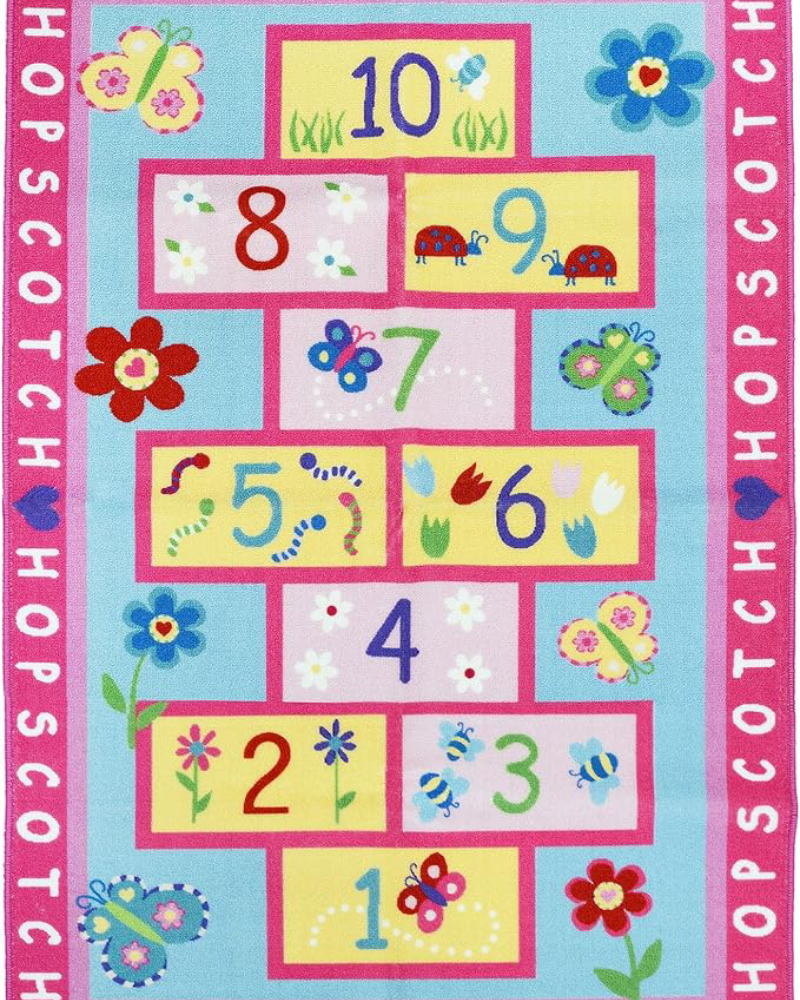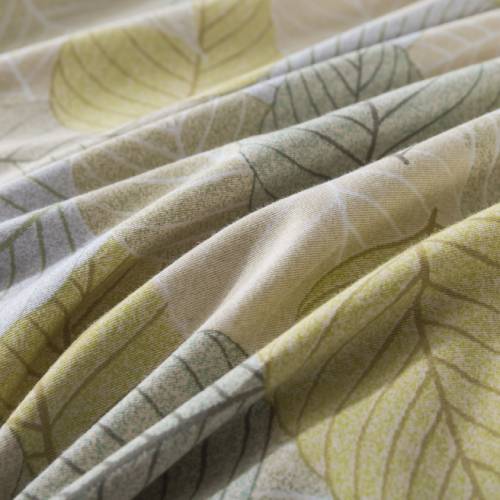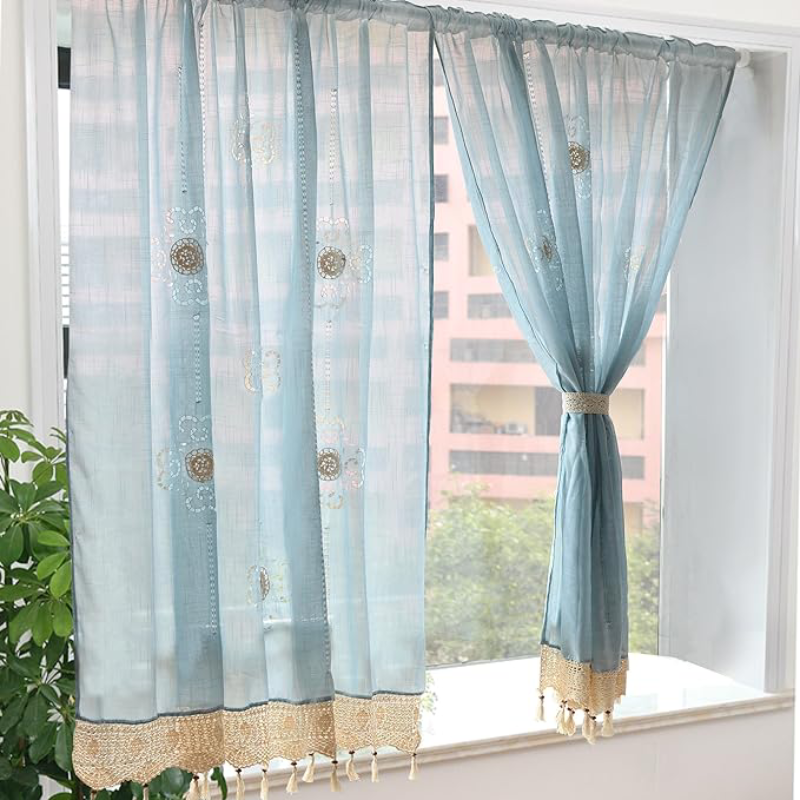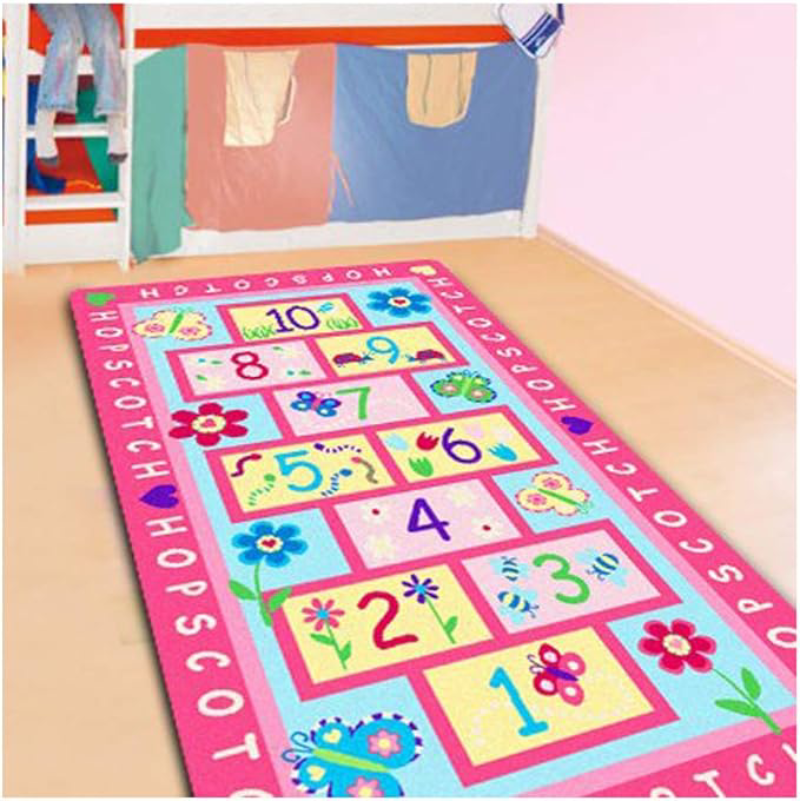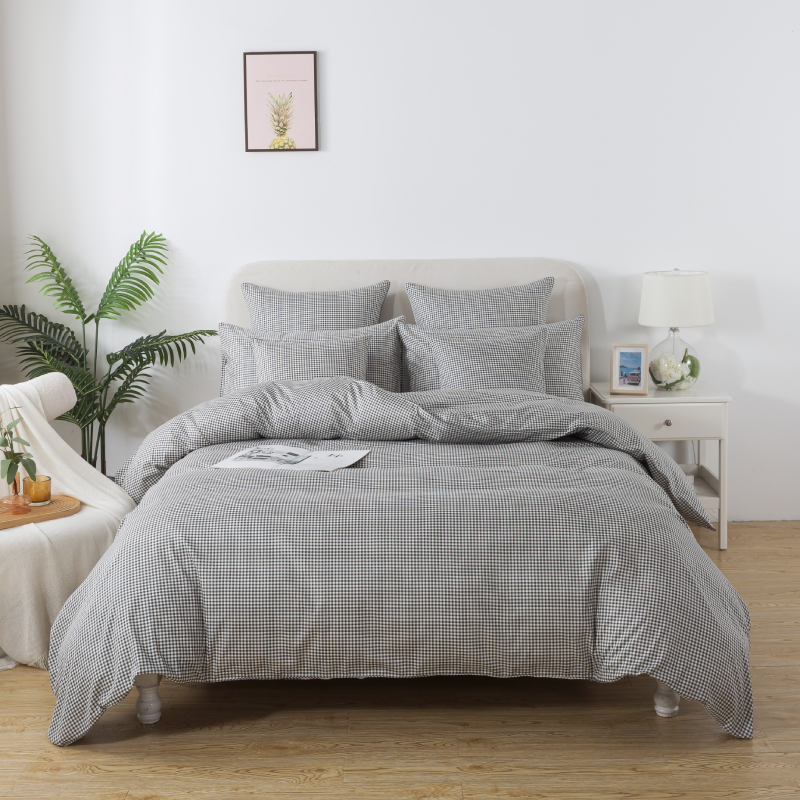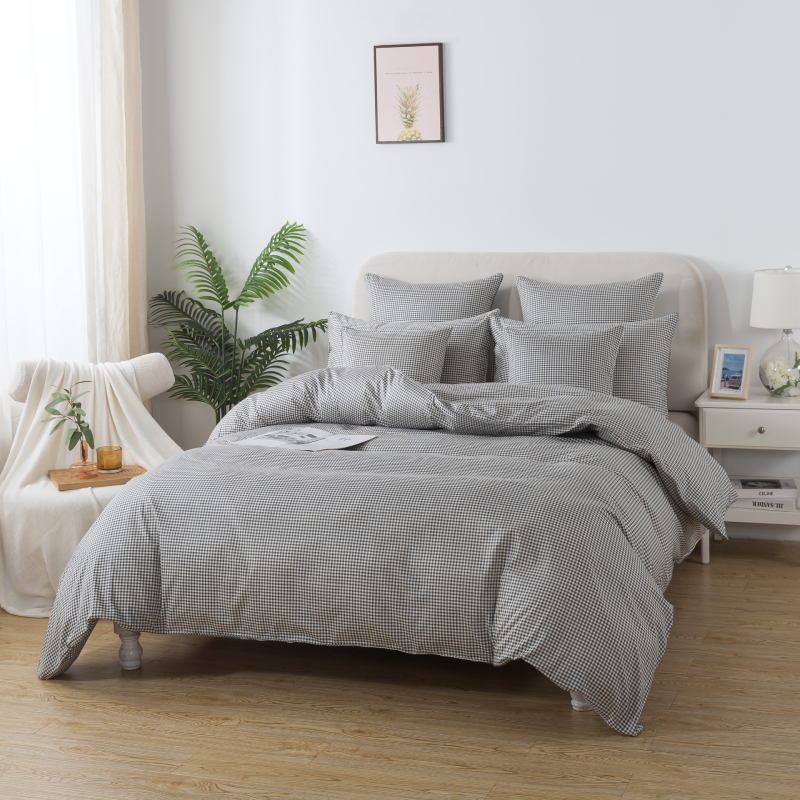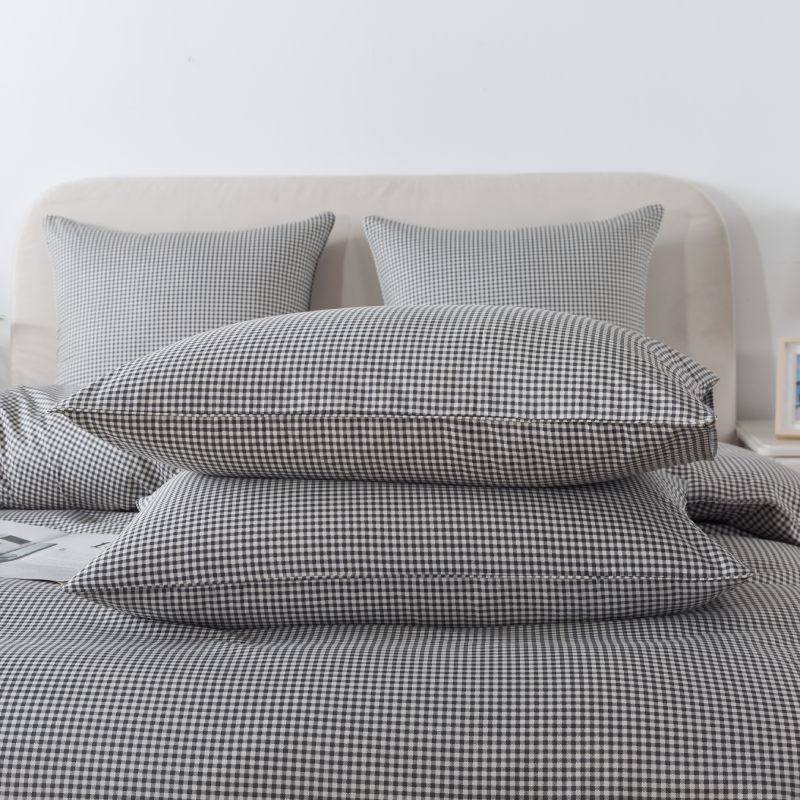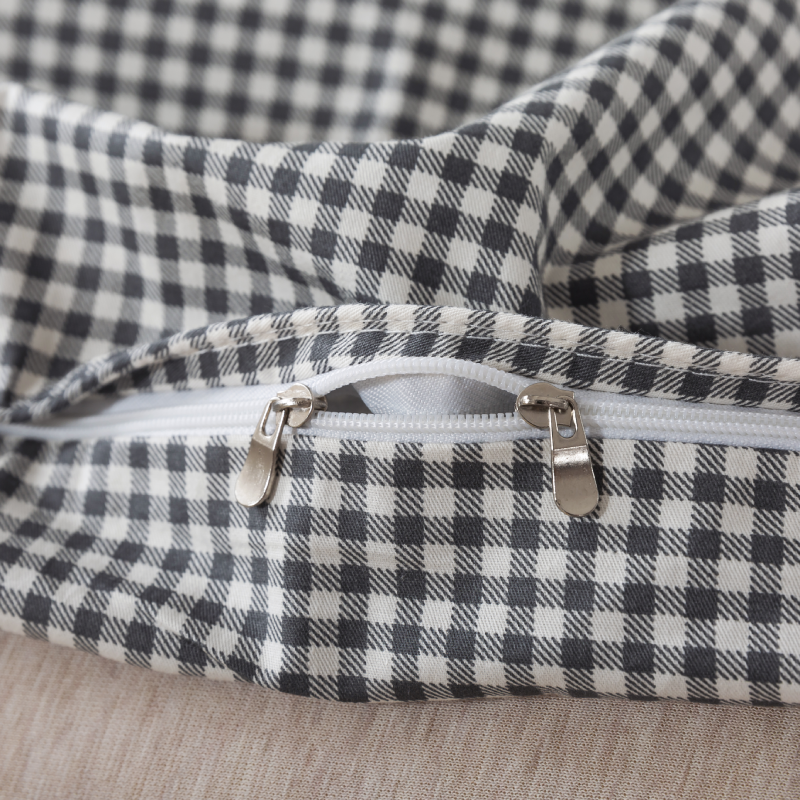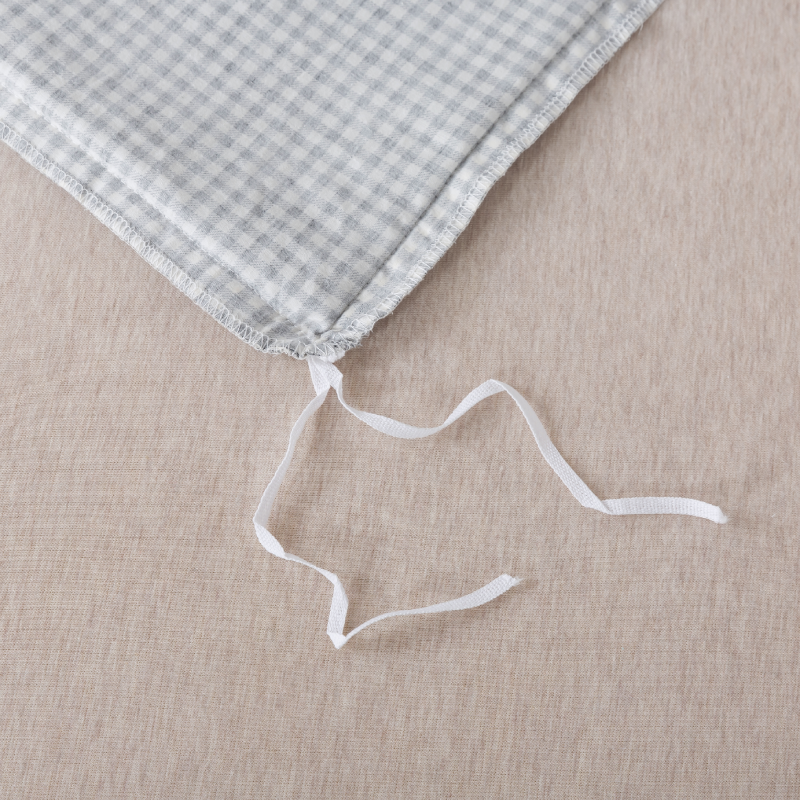Choosing the right duvet is crucial for a good night's sleep, as it can significantly affect your comfort and the overall look of your bedroom. With so many options available in the market, it can be overwhelming to pick the right one. This guide will help you understand the key factors to consider when selecting a duvet, including material, warmth, fill power, size, and other essential considerations.
1. Understanding Duvet Materials
The first step in choosing a duvet is to understand the different materials used in both the filling and the cover. The duvet filling can be either natural or synthetic, and the choice largely depends on personal preferences, allergies, and budget.
Natural Fillings:
- Down: Down is the soft layer found under the feathers of ducks and geese. It is highly insulating, lightweight, and breathable, making it a popular choice for duvets. Down duvets are known for their luxurious feel and excellent warmth-to-weight ratio. However, they can be more expensive and may not be suitable for people with allergies. The quality of down can vary depending on the type of bird and the region it comes from, so look for ethically sourced down if you are concerned about animal welfare.
- Feathers: Feather duvets are often blended with down to create a more affordable option. While they provide good warmth, they can be slightly heavier and less soft than pure down duvets. The feathers' quills can sometimes poke through the duvet cover, which may cause discomfort. For those who prefer a slightly firmer feel, feather-filled duvets can provide a different sleeping experience.
- Wool: Wool duvets are naturally hypoallergenic, moisture-wicking, and temperature-regulating. They are great for all seasons as they keep you warm in winter and cool in summer. Wool is also a sustainable and eco-friendly option. The natural breathability and moisture management of wool make it an ideal choice for those who might suffer from night sweats or fluctuating body temperatures during sleep.
- Silk: Silk duvets are lightweight, hypoallergenic, and breathable. They are perfect for those who want a luxurious feel and prefer a natural filling. However, silk duvets can be quite expensive and require delicate care. They offer a unique, smooth texture and are often favored by those looking for a lighter but still warm bedding option.
Synthetic Fillings:
- Microfiber: Microfiber duvets are made from ultra-fine synthetic fibers that mimic the softness of down. They are lightweight, hypoallergenic, and easy to care for. Microfiber duvets are a great option for those with allergies or a tighter budget. They are also easy to wash and dry, making them a practical choice for busy households or guest bedrooms.
- Hollowfiber: Hollowfiber duvets are filled with larger synthetic fibers that trap more air, making them warm and fluffy. They are generally more affordable and easy to maintain, but they might not be as breathable or long-lasting as natural fillings. Hollowfiber duvets are typically bulkier, which some people might find cozy, while others might find them too heavy.

2. Choosing the Right Warmth Level
The warmth of a duvet is one of the most important factors to consider, as it directly affects your comfort. Duvets come in various warmth levels, often measured in togs. A higher tog rating indicates a warmer duvet, while a lower tog rating is cooler.
- 5 Tog: Ideal for summer months or hot sleepers who prefer a lighter duvet. These duvets are perfect for warmer climates or for those who have a naturally higher body temperature.
- 5 to 10.5 Tog: Suitable for spring and autumn, offering a moderate level of warmth. This range provides flexibility for transitional seasons when temperatures can fluctuate.
- 12 to 15 Tog: Best for winter or cold sleepers who need extra warmth during the night. A higher tog duvet ensures that you remain warm and cozy even during the coldest nights, making them essential for colder climates.
You might also consider purchasing an all-season duvet, which typically comes with two layers – a lightweight duvet for summer and a medium-weight duvet for spring and autumn. These layers can be combined to create a warm duvet for winter. The versatility of an all-season duvet makes it a popular choice for those who want year-round comfort without having to buy multiple duvets.
3. Understanding Fill Power
Fill power is a measure of the loft or fluffiness of a down duvet. A higher fill power means better insulation and a lighter weight for the same warmth level. Duvets with a fill power of 600-700 are considered good quality, while those with 700 or above are considered excellent. A higher fill power duvet will be more durable and provide better warmth retention. Understanding fill power helps in choosing a duvet that provides the best balance between warmth and weight, enhancing overall comfort.
4. Selecting the Right Size
Choosing the right size for your duvet is important to ensure it fits your bed properly and provides adequate coverage. Duvets are available in standard sizes, such as twin, full, queen, and king. Here are some tips to help you choose the right size:
- Twin Size: Ideal for single beds or children's beds. Twin-sized duvets are typically used in dorm rooms, guest rooms, or kids' rooms where single beds are more common.
- Full/Double Size: Suitable for smaller double beds or for those who want a snug fit. This size is also great for guest bedrooms or for those who prefer a more fitted look.
- Queen Size: A popular choice for most beds, providing good coverage without being too bulky. It offers enough drape and coverage for two people sharing the bed without feeling constrained.
- King/California King Size: Perfect for larger beds or for couples who want extra room and comfort. A king-size duvet adds a luxurious touch and is ideal for people who move a lot during sleep or want extra coverage.
Consider getting a duvet that is one size larger than your mattress if you prefer a more luxurious, draped look or if you share the bed and need extra coverage. A larger duvet also minimizes the chances of drafts, keeping you warmer throughout the night.
5. Duvet Construction Types
The construction of a duvet can impact its performance and comfort. Here are some common construction types to consider:
- Baffle Box: This construction features a series of internal fabric walls that create individual boxes to hold the filling in place. This prevents the filling from shifting, ensuring even warmth and preventing cold spots. Baffle box construction is highly recommended for down duvets as it maximizes the loft and fluffiness.
- Channel: In channel construction, the duvet has parallel seams running lengthwise, allowing the filling to move freely. This can be a good choice if you prefer a duvet that you can shake and adjust for different warmth levels. However, it may require occasional fluffing to maintain even distribution.
- Sewn-Through: This construction features stitches that go through both layers of the duvet, creating pockets that hold the filling. It is more affordable but can result in cold spots due to the stitches compressing the filling. This type of construction is often found in lighter-weight duvets meant for warmer weather.
6. Consider Your Allergies
If you suffer from allergies, choosing the right duvet material is essential. Synthetic fillings such as microfiber and hollowfiber are hypoallergenic and less likely to harbor dust mites. Additionally, duvets with natural fillings like wool and silk are naturally resistant to dust mites and can be a great choice for allergy sufferers. Look for duvets labeled as "hypoallergenic" or "anti-allergy" for added peace of mind. Regularly washing your duvet cover and using protective covers can further reduce allergens.
7. Maintenance and Care
A duvet's lifespan and comfort depend on how well you care for it. Here are some tips for maintaining your duvet:
- Regular Fluffing: Fluff your duvet regularly to redistribute the filling and maintain its loft. This is especially important for down and feather-filled duvets.
- Air It Out: Air your duvet occasionally to keep it fresh and to prevent moisture buildup. This is particularly beneficial for natural fill duvets that can absorb moisture over time.
- Follow Care Instructions: Always check the manufacturer's care instructions. Some duvets are machine washable, while others require professional cleaning. Knowing how to care for your duvet will ensure it stays in good condition for longer.
- Use a Duvet Cover: A duvet cover protects your duvet from dirt and spills, reducing the need for frequent washing. It also allows you to easily change the look of your bedding.
8. Budget Considerations
Duvets come in a wide range of prices, from budget-friendly options to luxurious, high-end products. The price of a duvet is influenced by factors such as the type of filling, fill power, construction, and brand. While it can be tempting to go for the cheapest option, investing in a higher-quality duvet can provide better comfort, durability, and overall value in the long run. A quality duvet can last for many years, making it a worthwhile investment for your sleep quality.
9. Consider Your Climate and Room Temperature
Your local climate and bedroom temperature also play a role in choosing the right duvet. If you live in a warmer climate or your room tends to get hot, opt for a lower tog duvet or one made from breathable materials like cotton, silk, or lightweight microfiber. For colder climates, a higher tog rating or natural fillings like down and wool can provide better warmth and insulation. It's essential to consider seasonal changes and your personal comfort level when selecting a duvet.
10. Additional Features
Some duvets come with additional features that can enhance your comfort, such as:
- Temperature-Regulating Technology: Some duvets are designed with temperature-regulating technology to keep you comfortable throughout the night. These duvets can adapt to your body temperature, preventing overheating or chilling.
- Moisture-Wicking Properties: Duvets with moisture-wicking properties are great for hot sleepers who tend to sweat at night. These duvets help keep you dry and comfortable, enhancing sleep quality.
- Anti-Microbial Treatment: Look for duvets with anti-microbial treatments to prevent bacteria and odor buildup. This is particularly useful for those who want a fresh and clean sleeping environment.
Choosing the right duvet involves considering these various factors to find a product that suits your specific needs and preferences. At Fadfay,each element—from material to construction—plays a crucial role in the comfort and quality of your sleep, making the decision an important one for long-term satisfaction.

